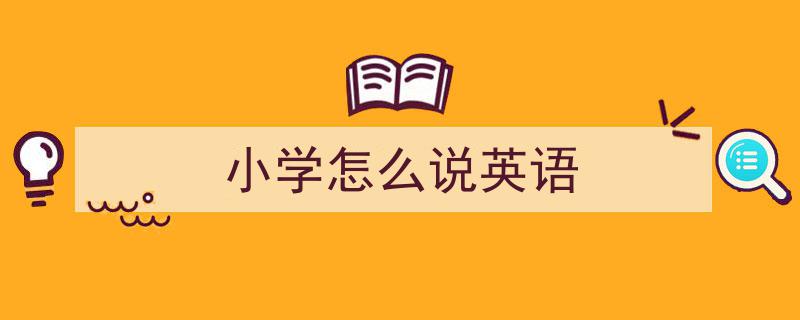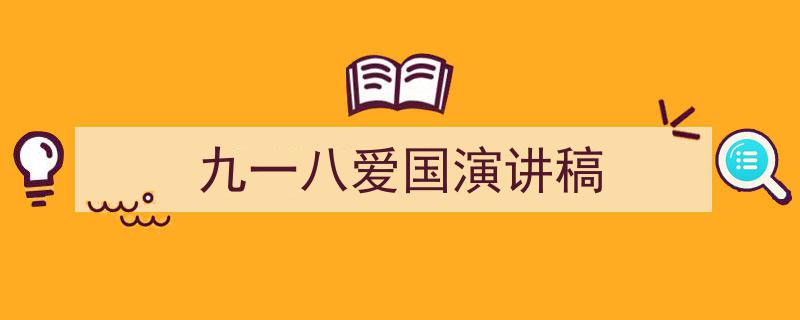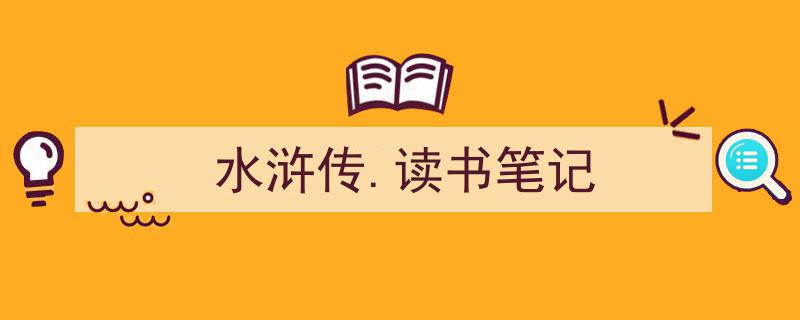欢迎来到58原创网网
写作《小学英语祈使句练习题》小技巧请记住这五点。(精选5篇)
更新日期:2025-10-16 22:14

写作核心提示:
这是一篇关于小学英语祈使句练习题作文应该注意哪些事项的文章:
"小学英语祈使句练习题作文:需要注意哪些事项?"
祈使句是小学英语语法学习中的一个重要组成部分,它用于表达请求、命令、建议、邀请或禁止等。在练习题作文中,正确、规范地使用祈使句是考察学生语言运用能力的重要方式。那么,在完成这类练习时,我们应该注意哪些事项呢?
"一、 核心结构要牢记:"
"句首大写,句末标点:" 这是祈使句最基本也是最重要的规则。"务必"记住,所有的祈使句都必须以大写字母开头。句末标点符号通常是句号(.),但在表示请求、建议等比较委婉的语气时,也可以使用感叹号(!)。"切记不要忘记加标点,或者用错标点。" "动词原形:" 祈使句的谓语动词必须使用"动词原形",无论主语是“你(you)”、“我们(we)”、“他(he)”还是复数形式。这是祈使句与一般现在时的主要区别之一。例如,要说“请安静”,要说成 "Please be quiet",而不是 "Please be quiet" 或 "Please you be quiet"。
"二、 人称代词的省略:"
中考英语必备各类祈使句用法详解及专练试题附参考答案解析
祈使句是用来表示命令、请求、建议或劝告等的句子,这类句子的主语通常是第二人称you,但常常被省略,谓语动词则用原形。以下为你详细介绍中考英语必备各类祈使句用法,并附上双语例句。
一、肯定祈使句
1. 动词原形开头
- 例句1:Come here quickly.(快点到这里来。)
- 例句2:Listen to the teacher carefully in class.(上课认真听老师讲课。)
- 例句3:Open your books to page 10.(把你们的书打开到第10页。)
- 例句4:Write down your names on the paper.(把你们的名字写在纸上。)
- 例句5:Play basketball with us after school.(放学后和我们一起打篮球。)
2. Be型
- 例句1:Be patient with others.(对他人要有耐心。)
- 例句2:Be confident in yourself.(要对自己有信心。)
- 例句3:Be a responsible citizen.(做一个有责任感的公民。)
- 例句4:Be friendly to your classmates.(对同学们友好些。)
- 例句5:Be punctual for every meeting.(每次开会都要准时。)
3. Let型
- 例句1:Let's go shopping this weekend.(这个周末咱们去购物吧。)
- 例句2:Let him try this new method.(让他试试这个新方法。)
- 例句3:Let her decide what to do next.(让她决定下一步做什么。)
- 例句4:Let them enjoy their vacation.(让他们享受假期。)
- 例句5:Let us have a break now.(现在让我们休息一下。)
4. Do型强调
- 例句1:Do study hard if you want to get good grades.(如果你想取得好成绩,一定要努力学习。)
- 例句2:Do come to my birthday party.(一定要来参加我的生日派对。)
- 例句3:Do remember to turn off the lights when you leave.(离开时一定要记得关灯。)
- 例句4:Do be quiet in the library.(在图书馆里一定要安静。)
- 例句5:Do tell me the whole story.(一定要把整个故事都告诉我。)
二、否定祈使句
1. Don't型
- 例句1:Don't play games too much.(不要玩太多游戏。)
- 例句2:Don't make noise in the hospital.(不要在医院里制造噪音。)
- 例句3:Don't forget to bring your homework tomorrow.(明天不要忘记带作业。)
- 例句4:Don't run in the hallway.(不要在走廊里奔跑。)
- 例句5:Don't waste food.(不要浪费食物。)
2. Never型
- 例句1:Never lose hope.(永远不要失去希望。)
- 例句2:Never give in to difficulties.(永远不要向困难屈服。)
- 例句3:Never tell a lie to your parents.(永远不要对父母说谎。)
- 例句4:Never be afraid of making mistakes.(永远不要害怕犯错。)
- 例句5:Never smoke in public places.(绝不要在公共场所吸烟。)
3. Let型否定
- 例句1:Let's not argue about this anymore.(咱们不要再为这个争论了。)
- 例句2:Let him not stay up late every day.(别让他每天都熬夜。)
- 例句3:Let her not worry about the test results.(别让她担心考试结果。)
- 例句4:Let them not play with fire.(别让他们玩火。)
- 例句5:Let us not forget our dreams.(我们不要忘记自己的梦想。)
4. No型
- 例句1:No running on the grass.(禁止在草地上奔跑。)
- 例句2:No spitting in public.(禁止在公共场所随地吐痰。)
- 例句3:No parking in front of the gate.(禁止在门前停车。)
- 例句4:No talking during the exam.(考试期间禁止交谈。)
- 例句5:No littering everywhere.(禁止到处乱扔垃圾。)
祈使句选择填空专练(40题)
1. —I'm worried about the coming exam.
—__________! Everything will be fine.
A. Cheer up B. Look out C. Take it easy D. Come on
2. __________ late for class again, Tom.
A. Don't B. Don't be C. Not be D. Be not
3. __________ me a call when you get to Shanghai.
A. Give B. Gives C. To give D. Giving
4. __________ cross the road until the traffic lights turn green.
A. Not B. Don't C. Won't D. Doesn't
5. __________ careful when you drive on rainy days.
A. Being B. Be C. To be D. Is
6. __________ the window. It's too cold outside.
A. Don't open B. Not open C. Open D. Opening
7. __________ us your new bike, will you?
A. Show B. Shows C. Showing D. To show
8. __________ quiet in the library. Everyone is reading.
A. Keep B. Keeps C. To keep D. Keeping
9. —Mum, I can't carry the box. It's too heavy.
—__________ me help you.
A. Let B. Let's C. Ask D. Asking
10. __________ smoking! It's bad for your health.
A. Stop B. Stops C. Stopping D. To stop
11. __________ on the grass, or it will “cry”.
A. Walk B. Don't walk C. To walk D. Walking
12. __________ to bed early. It's good for your health.
A. Going B. Goes C. Go D. To go
13. __________ up, Peter, or you'll be late for school.
A. Get B. Gets C. Getting D. To get
14. __________ the door before you leave the room.
A. Closing B. To close C. Close D. Closes
15. __________ waste water. We should save water.
A. Not B. Don't C. Doesn't D. Won't
16. __________ at the blackboard and listen to the teacher carefully.
A. Look B. Looks C. Looking D. To look
17. __________ make so much noise. The baby is sleeping.
A. Can't B. Don't C. Mustn't D. Needn't
18. __________ us some stories about your trip, please.
A. Telling B. Tells C. Tell D. To tell
19. __________ your hands before meals. It's good for your health.
A. Wash B. Washes C. Washing D. To wash
20. __________ in the street. It's too dangerous.
A. Don't play B. Not play C. Play D. Playing
21. __________ the computer. It's time to go to bed.
A. Turn off B. Turn on C. Turn up D. Turn down
22. __________ here early tomorrow. We have a lot to do.
A. Arrive B. Arrives C. Arriving D. To arrive
23. __________ eat too much junk food. It's not healthy.
A. Not B. Don't C. Doesn't D. Won't
24. __________ the book to me when you finish reading it.
A. Bring B. Brings C. Bringing D. To bring
25. __________ afraid of making mistakes. Everyone makes mistakes.
A. Don't be B. Not be C. Be not D. Aren't
26. __________ the rules in the library. Keep quiet and don't eat.
A. Follow B. Follows C. Following D. To follow
27. __________ to take an umbrella. It's going to rain.
A. Remember B. Remembers C. Remembering D. To remember
28. __________ loudly in the classroom. Other students are studying.
A. Don't talk B. Not talk C. Talk D. Talking
29. __________ us your photos after you come back from the trip.
A. Show B. Shows C. Showing D. To show
30. __________ to bed early, and you'll feel energetic tomorrow.
A. Go B. Goes C. Going D. To go
31. __________ in the sun. It's bad for your eyes.
A. Read B. Don't read C. Reading D. To read
32. __________ your homework first, then you can watch TV.
A. Finish B. Finishes C. Finishing D. To finish
33. __________ to school on time every day.
A. Come B. Comes C. Coming D. To come
34. __________ the light when you leave the room.
A. Turn off B. Turn on C. Turn up D. Turn down
35. __________ so much noise. The meeting is going on.
A. Don't make B. Not make C. Make D. Making
36. __________ me a hand. I can't carry the box alone.
A. Give B. Gives C. Giving D. To give
37. __________ up! We'll be late for the movie.
A. Hurry B. Hurries C. Hurrying D. To hurry
38. __________ at the traffic lights. Don't run the red light.
A. Wait B. Waits C. Waiting D. To wait
39. __________ swimming in the river. It's too dangerous.
A. Don't go B. Not go C. Go D. Going
40. __________ some exercise every day. It's good for your body.
A. Do B. Does C. Doing D. To do
参考答案及解析
1. C:“Take it easy”意为“别紧张;放松点”,用于安慰对方。“Cheer up”振作起来;“Look out”小心;“Come on”加油,均不符合语境。
2. B:否定祈使句以“Don't + 动词原形”开头,“be late for”是固定短语,意为“迟到”,所以选“Don't be”。
3. A:肯定祈使句以动词原形开头,“Give me a call”表示“给我打电话”。
4. B:“Don't + 动词原形”构成否定祈使句,“Don't cross the road”表示“不要过马路” 。
5. B:肯定祈使句用动词原形开头,“Be careful”表示“小心”,是固定表达。
6. A:根据“It's too cold outside”可知是不要开窗,否定祈使句用“Don't + 动词原形”,选“Don't open”。
7. A:祈使句用动词原形开头,“Show us your new bike”表示“给我们看看你的新自行车”。
8. A:肯定祈使句用动词原形,“Keep quiet”表示“保持安静”,符合图书馆场景。
9. A:“Let sb. do sth.”表示“让某人做某事”,这里是让妈妈帮忙,“Let me help you”正确;“Let's”是“Let us”,不符合语境;“Ask”用法错误。
10. A:肯定祈使句用动词原形开头,“Stop smoking”表示“停止吸烟”。
11. B:根据“or it will ‘cry’”可知是不要在草地上走,否定祈使句用“Don't + 动词原形”,选“Don't walk”。
12. C:肯定祈使句用动词原形,“Go to bed early”表示“早点睡觉”。
13. A:“Get up”表示“起床”,是祈使句,以动词原形开头,“Get up, Peter, or you'll be late for school”表示“彼得,起床,否则你上学要迟到了”。
14. C:肯定祈使句用动词原形开头,“Close the door”表示“关上门”。
15. B:否定祈使句用“Don't + 动词原形”,“Don't waste water”表示“不要浪费水”。
16. A:肯定祈使句用动词原形,“Look at the blackboard”表示“看黑板”。
17. B:否定祈使句用“Don't + 动词原形”,“Don't make so much noise”表示“不要制造这么多噪音”。
18. C:祈使句用动词原形开头,“Tell us some stories”表示“给我们讲一些故事”。
19. A:肯定祈使句用动词原形,“Wash your hands”表示“洗手”。
20. A:否定祈使句用“Don't + 动词原形”,“Don't play in the street”表示“不要在街上玩耍”。
21. A:“Turn off”表示“关闭”;根据“It's time to go to bed”可知是关掉电脑;“Turn on”打开;“Turn up”调大;“Turn down”调小,均不符合语境。
22. A:肯定祈使句用动词原形,“Arrive here early”表示“明天早点到这里”。
23. B:否定祈使句用“Don't + 动词原形”,“Don't eat too much junk food”表示“不要吃太多垃圾食品”。
24. A:肯定祈使句用动词原形,“Bring the book to me”表示“把书带给我”。
25. A:否定祈使句“不要害怕”用“Don't be afraid”,“be afraid of”是固定短语。
26. A:肯定祈使句用动词原形,“Follow the rules”表示“遵守规则”。
27. A:肯定祈使句用动词原形,“Remember to take an umbrella”表示“记得带把伞”。
28. A:否定祈使句用“Don't + 动词原形”,“Don't talk loudly”表示“不要大声交谈”。
29. A:祈使句用动词原形开头,“Show us your photos”表示“给我们看看你的照片”。
30. A:肯定祈使句用动词原形,“Go to bed early”表示“早点睡觉”,“祈使句 + and + 陈述句”是固定句型。
31. B:根据“It's bad for your eyes”可知是不要在太阳下看书,否定祈使句用“Don't + 动词原形”,选“Don't read”。
32. A:肯定祈使句用动词原形,“Finish your homework”表示“完成你的作业”。
33. A:肯定祈使句用动词原形,“Come to school on time”表示“每天按时到校”。
34. A:“Turn off the light”表示“关灯”,根据“when you leave the room”可知是离开时关灯。
35. A:否定祈使句用“Don't + 动词原形”,“Don't make so much noise”表示“不要制造这么多噪音”。
36. A:肯定祈使句用动词原形,“Give me a hand”表示“帮我一下”。
37. A:肯定祈使句用动词原形,“Hurry up”表示“快点”。
38. A:肯定祈使句用动词原形,“Wait at the traffic lights”表示“在交通灯处等待”。
39. A:否定祈使句用“Don't + 动词原形”,“Don't go swimming”表示“不要去游泳”。
40. A:肯定祈使句用动词原形,“Do some exercise”表示“做一些锻炼”。
陈述句、疑问句、祈使句和感叹句,初中阶段需掌握的4大英语句型
本文提供电子版(含答案),可打印或下载至移动设备查看学习。
领取方式:
点击右上角关注我们,主页私信回复:初中英语,即可获得完整版PDF文档
配套人教版教材,同步练习,一课一练,适合期末复习,购买即赠送电子版,可打印使用
句子按说话目的可分为四类:陈述句、疑问句、祈使句和感叹句。
陈述句
考点:陈述句的肯定结构和否定结构。
在肯定结构中,谓语动词不含否定词;否定结构是在系动词、助动词或情态动词后加not,除了not外,其他否定词,如no, hardly, never, neither, nor等,也可以构成否定句。
【考例链接】按要求完成下列各题
1. Tom does morning exercise every day. (改为否定句)
Tom _______ _______ morning exercise every day.
2. John went to church with his brother last Sunday morning. (改为否定句)
John _______ _______ to church with his brother last Sunday morning.
3. Both you and he have received an invitation to the English party. (改为否定句)
_______ you _______ he has received an invitation to the English party.
4. The boys can play chess in the afternoon. (改为否定句)
The boys _______ _______ chess in the afternoon.
疑问句
疑问句用来提出问题。英语中有四种疑问句:一般疑问句、特殊疑问句、选择疑问句和附加疑问句。《义务教育英语课程标准》要求同学们掌握前三种。
考点一:一般疑问句。
一般疑问句通常将系动词、助动词或情态动词放到主语前构成。一般疑问句用Yes 或No 来,其常用简略答语。
【考例链接】按要求完成下列各题
1. The newly-opened supermarket had something on sale last Sunday. (改为一般疑问句)
______ the newly-opened supermarket ______ anything on sale last Sunday?
2. People will use robots more and more in the future life. (改为一般疑问句)
______ people ______ robots more and more in the future life?
3. it, outside, hot, is (连词成句)
__________________________________________?
考点二:特殊疑问句。
1. 以疑问词开始,以寻求信息为目的的句子叫特殊疑问句。特殊疑问句时,不能用Yes或No,而要根据实际情况。
2. 常用的疑问词有:疑问代词what, which, who, whose, whom;疑问副词when, where, why, how;疑问词组how soon, how long, how far, how often, how old, how many, how much, what class, what time, what color等。
3. 特殊疑问句的结构:“疑问词(不作主语)+一般疑问句语序?”。
【考例链接】按要求完成下列各题
1. Susan has been a volunteer for protecting animals for three years. (对划线部分提问)
_______ _______ has Susan been a volunteer for protecting animals?
2. We will travel to the Great Wall after the exam. (对划线部分提问)
______ ______ you travel after the exam?
3. 这个暑假你打算做什么? (完成译句)
___________________________________________
4. 在我们学校,哪位体育老师足球踢得最好? (完成译句)
___________________________________________
考点三:选择疑问句。
选择疑问句提供两种或两种以上情况,用or连接。时不能用Yes或No,而要根据选择的情况进行。
【考例链接】单项选择
( )1. —Is the mobile phone new or old?
—______. I bought it only two days ago.
A. It's old B. It's new C. Yes, it is D. No, it isn't
( )2. —Did Jeff go to the zoo by subway or by taxi yesterday?
—______.
A. Yes, he went there by subway B. No, he went there by bus
C. He went there by taxi D. He went there to see animals
( )3. —Which do you prefer, traditional Western music ______ pop music?
—Pop music.
A. but B. as C. or D. from
祈使句
考点一:肯定式
祈使句的肯定是以动词原形开头,祈使句的主语一般都是第二人称you,但往往省略。有时为了强调对方时,可以写出主语you或人名。为了使语气变得委婉、客气,可在句首或句末加上please。
考点二:否定式
在动词原形前加don't构成否定的祈使句。
考点三:祈使句+and / or+分句
在句型“祈使句+and / or+分句”中,祈使句相当于条件状语从句。
【考例链接】
Ⅰ. 单项选择
( )1. Boys and girls, ______ learning and have fun.
A. keep B. to keep C. keeping D. kept
( )2. —Excuse me, but can you tell me where the nearest bank is?
—Just ______ going for two more blocks and you'll see it.
A. keep B. to keep C. keeping D. keeps
Ⅱ. 按要求完成下列各题
1. on time, to, remember, arrive (连词成句)
___________________________________________.
2. 明天别忘了带上你的外套。 (完成译句)
___________________________________________
3. 不要和你的老师顶嘴。 (完成译句)
___________________________________________.
4. 仔细记笔记,这对你的学习有帮助。 (补全句子)
___________________________________________, and it is helpful for your study.
感叹句
感叹句表示喜、怒、哀、乐等强烈的感情,一般由what或how引导,句末常用感叹号。
考点一:what引导的感叹句。
what修饰名词,它引导的感叹句有三种句型:
1. What + a / an +形容词+单数可数名词 (+主语+其他)!
2. What +形容词+复数可数名词(+主语+其他)!
3. What +形容词+不可数名词(+主语+其他)!
考点二:how引导的感叹句。
how修饰形容词或副词,它引导的感叹句的句型为:How +形容词/副词(+主语+其他)!
【考例链接】
Ⅰ. 单项选择
( )1. —Aamir Khan played the part of a great father in the movie The Tale of Fatherly Love.
—______ excellent actor he is!
A. What B. What a C. What an D. How
( )2. ______ important it is for kids to imagine freely!
A. What B. How C. How an D. What an
( )3. —______ delicious food you served us tonight! Thank you very much!
—I'm glad that you enjoyed it.
A. How B. How a C. What D. What a
( )4. —Have you heard that Lin Tao saved his neighbour from a big fire last night?
—Yes. ______ brave young man he is!
A. How B. How a C. What D. What a
Ⅱ. 按要求完成下列各题
1. 多优美的音乐啊! (完成译句)
__________________________________________!
2. 多么好的主意啊! (完成译句)
__________________________________________!
3. 那位老师给的建议是多么有价值啊! (完成译句)
__________________________________________!
4. 多么糟糕的天气! (补全句子)
_______ ________ weather it is!
5. 乡村的空气是多么新鲜啊! (补全句子)
_______ ________ the air in the countryside is!
责编 | 杨宁
审稿 | 李栋
校稿 | 吕放
领取本文【参考答案】的方式:
点击右上角关注我们,主页私信回复:初中英语,即可获得完整版PDF文档
请记得关注、点赞、转发、收藏
文章说明
本站部分资源搜集整理于互联网或者网友提供,仅供学习与交流使用,如果不小心侵犯到你的权益,请及时联系我们删除该资源。






